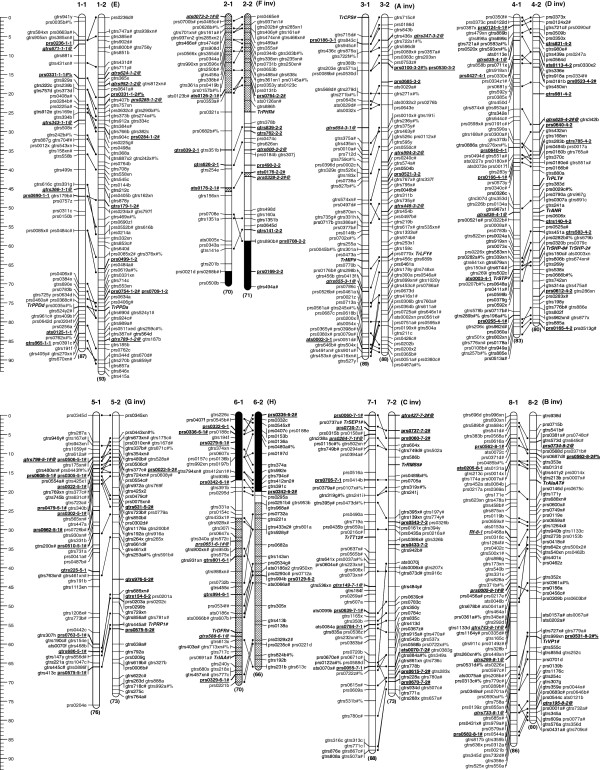Figure 2.
An integrated linkage map of allotetraploid white clover (2n=4x=32) derived from two independent mapping populations. The integrated map consists of 1109 independent loci including 427 loci from 308 EST-SSRs, 47 loci from 31 genomic SSRs, 615 loci from 465 GeneThresher®- derived SSRs, 19 loci from 18 candidate genes, and the morphological locus Rf. The eight homoeologous pairs of linkage groups have been aligned and orientated with Medicago truncatula nomenclature and labelled 1–8. Homoeologues within each pair are designated -1 and -2 based on alignment to homoeologues described in Barrett et al. [20]. For ease of comparison with previous literature, the Barrett et al. [20] A-H nomenclature and relative alignment (inv=inverted) is provided in brackets. Estimated genetic distance (cM) is represented by the scale below the map, and length (cM) of each homoeologue is indicated in brackets below each group. Homoeologous loci are connected by lines between homoeologue pairs. Loci prefixes ats, prs, gtrs and Tr denote genomic-, EST-, white clover GeneThresher®-SSRs, and candidate genes, respectively. Loci suffixes a-i, x, xn, y, and z represent locus configurations of individual alleles, (ab×cd), (ab×cd) with at least one null allele, (ab×ac), and (ab×ab), respectively. Loci labelled in bold and bold italics@ denote loci common to both MP1 and MP2 used for map integration, and single locus homoeologue-specific loci for homoeologue identification and integration, respectively. Additional suffixes # and #% represent loci with homology to the Medicago truncatula reference genome that align to the equivalent M. truncatula chromosome, or to a different chromosome, respectively. Regions of homoeologous groups 2 and 6 filled by cross hatching or solid black represent the regions of loci with homology to M. truncatula chromosomes 2 or 6, respectively.

